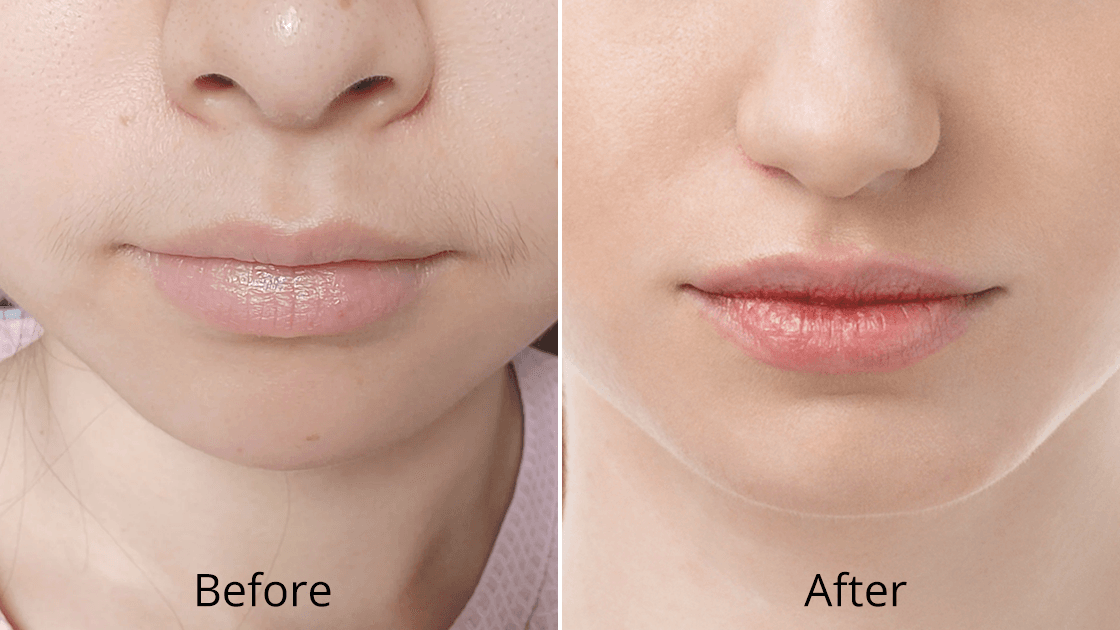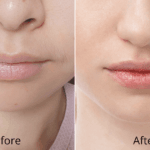The quest for smooth, hair-free skin has led to remarkable advances in laser technology, making professional-grade hair removal more accessible and effective than ever before. However, with numerous devices flooding the market, understanding the science behind wavelength selection has become crucial for achieving optimal results while maintaining safety. The key to successful laser hair removal lies not just in the device itself, but in matching the right wavelength to your unique combination of skin tone and hair characteristics.
1. Введение
The landscape of laser удаление волос has evolved dramatically over the past decade, with technological advances making treatments safer and more effective across diverse skin types and hair colors. Understanding the fundamental principles that govern laser-tissue interactions empowers consumers to make informed decisions about treatment options and device selection.
1.1 Why Wavelengths Matter in Laser Hair Removal
Wavelength selection represents the foundation of effective laser hair removal, determining how deeply light penetrates skin tissue and how efficiently it targets melanin within hair follicles. The primary principle behind laser hair removal is selective photothermolysis (SPTL), the matching of a specific wavelength of light and pulse duration to obtain optimal effect on a targeted tissue with minimal effect on surrounding tissue. This precision targeting ensures maximum hair follicle destruction while minimizing damage to surrounding skin structures. Different wavelengths interact with melanin chromophores in distinct ways, with shorter wavelengths demonstrating higher melanin absorption but limited penetration depth, while longer wavelengths penetrate deeper but with reduced melanin specificity. The optimal wavelength creates the perfect balance between melanin absorption and adequate penetration to reach follicular structures effectively. This scientific principle explains why universal devices claiming to work equally well for all skin types often fall short of expectations.
1.2 How Choosing the Right Wavelength Maximizes Effectiveness
Proper wavelength selection maximizes treatment effectiveness by ensuring optimal energy delivery to target structures while maintaining safety margins for surrounding tissues. The chromophore employed in laser hair reduction is melanin. Melanin absorbs light in the range of 300 to 1200 nm, and lasers in this range of wavelengths can be effectively used for hair reduction. Within this broad spectrum, specific wavelengths demonstrate superior performance for particular combinations of skin and hair characteristics. The effectiveness of wavelength matching becomes apparent when comparing treatment outcomes across different parameters. Individuals using appropriately matched wavelengths typically experience faster hair reduction, require fewer treatment sessions, and achieve longer-lasting results compared to those using suboptimal wavelength selections. This efficiency translates into both cost savings and reduced time investment while minimizing the risk of adverse effects such as burns, hyperpigmentation, or paradoxical hair growth.
1.3 Common Misconceptions About Laser Devices
Several persistent misconceptions continue to influence consumer decisions regarding laser hair removal devices, often leading to suboptimal outcomes and safety concerns. The most prevalent myth suggests that higher power automatically equates to better results, when in reality, wavelength appropriateness and proper parameter settings prove far more critical for achieving desired outcomes. This misconception frequently leads to the selection of devices that may deliver excessive energy at inappropriate wavelengths, increasing risk without improving effectiveness. Another common fallacy involves the belief that single-wavelength devices provide inferior results compared to multi-wavelength systems. While combined wavelength technologies offer certain advantages for treating diverse hair and skin combinations, properly selected single-wavelength devices can deliver exceptional results when matched appropriately to individual characteristics. The key lies in understanding which wavelength serves your specific needs rather than assuming more technology necessarily means better outcomes.
1.4 What This Guide Covers
This comprehensive guide examines the scientific principles underlying wavelength selection for laser hair removal, providing practical guidance for matching technology to individual needs. Coverage includes detailed analysis of how different wavelengths interact with various skin types and hair characteristics, evaluation of common device selection mistakes, and evidence-based recommendations for optimizing treatment outcomes through proper wavelength matching. The guide addresses both technical aspects of laser-tissue interactions and practical considerations for device selection, treatment protocols, and outcome optimization. Special attention focuses on safety considerations, comfort factors, and long-term effectiveness to ensure readers can make informed decisions that align with their aesthetic goals, safety requirements, and practical constraints.
2. Understanding Laser Wavelengths
The physics of laser-tissue interaction forms the foundation for understanding why wavelength selection proves so crucial in achieving effective, safe hair removal outcomes. Mastering these fundamental concepts enables informed decision-making regarding device selection and treatment approaches.
2.1 What Wavelength Means in Hair Removal
Wavelength refers to the distance between successive peaks of electromagnetic radiation, measured in nanometers (nm), which determines how laser light interacts with different tissue components. Wavelengths between 700 and 1000 nm are selectively absorbed by melanin, whereas competing chromophores such as oxyhemoglobin and water absorb less energy at these wavelengths. This selective absorption creates the foundation for targeted hair follicle destruction while preserving surrounding tissue integrity. The relationship between wavelength and tissue interaction follows predictable physical laws, with shorter wavelengths demonstrating higher absorption by melanin but limited penetration depth, while longer wavelengths penetrate deeper with reduced melanin specificity. Understanding this relationship helps explain why different wavelengths prove optimal for different combinations of skin pigmentation and hair characteristics. The goal involves selecting wavelengths that maximize melanin absorption within follicular structures while maintaining adequate penetration and tissue selectivity.
2.2 How Different Wavelengths Penetrate Skin Layers
Tissue penetration characteristics vary significantly across the therapeutic wavelength spectrum, directly influencing treatment effectiveness and safety profiles. The optical penetration is approximately the same for lasers at 694, 755, and 800 nm. The penetration of radiation from Nd:yttrium-aluminum-garnet lasers at 1064 nm is, however, somewhat larger. This increased penetration of longer wavelengths enables effective treatment of deeper follicular structures while reducing surface heating that could damage epidermal tissues. Shorter wavelengths (694-755nm) demonstrate excellent melanin absorption but limited penetration, making them ideal for treating superficial follicles in light skin types. Medium wavelengths (800-810nm) provide balanced penetration and melanin absorption, offering versatility across moderate skin tones. Longer wavelengths (1064nm) penetrate deeply with reduced melanin absorption, making them safer for darker skin types where epidermal melanin might otherwise compete for laser energy.
2.3 Wavelength Selection for Various Hair Colors and Thicknesses
Hair color and thickness are critical factors in determining the optimal wavelength for laser hair removal. Dark, coarse hairs contain higher melanin concentrations, making them ideal targets for wavelengths around 694–810 nm, which efficiently generate heat within hair follicles. In contrast, lighter hairs—blonde, red, or gray—have less melanin, reducing energy absorption and treatment effectiveness. Coarse terminal hairs, with larger follicular structures and dense pigmentation, respond well across multiple wavelengths, while fine vellus hairs require different approaches due to smaller follicles and lower melanin content. Follicle depth also plays a role: deeper hairs benefit from longer wavelengths that penetrate adequately to reach the follicle. Understanding these variations helps set realistic expectations for treatment outcomes and guides wavelength selection for specific hair types. For lighter or fine hairs, alternative strategies or specialized laser settings may improve results, though success is generally more limited compared to darker, coarser hair.
2.4 Wavelength Considerations for Different Skin Types
The Fitzpatrick skin typing system provides a standardized framework for understanding how different wavelengths interact with various skin pigmentation levels. Lighter skin types respond well to the Alexandrite 755nm laser whilst darker skin types respond to the Nd Yag 1064nm laser. The diode 810nm laser is very useful for moderate skin types. This wavelength-skin type matching helps prevent complications while optimizing treatment effectiveness. Light skin types (Fitzpatrick I-II) contain minimal epidermal melanin, allowing shorter wavelengths to pass through surface layers and target follicular melanin effectively. Medium skin types (Fitzpatrick III-IV) require careful wavelength selection to balance melanin targeting with epidermal safety, often benefiting from intermediate wavelengths around 800-810nm. Dark skin types (Fitzpatrick V-VI) necessitate longer wavelengths that minimize epidermal absorption while maintaining adequate follicular targeting.
2.5 Comfort and Safety: How Wavelength Affects Sensations
Treatment comfort and safety profiles vary significantly across different wavelengths, influencing patient tolerance and treatment completion rates. Shorter wavelengths tend to produce more intense sensations due to higher epidermal absorption, while longer wavelengths typically generate less surface heating and improved comfort levels. Understanding these sensation differences helps set appropriate expectations and may influence wavelength selection for sensitive individuals. Safety considerations extend beyond immediate comfort to include risks of burns, hyperpigmentation, and paradoxical hair growth. Appropriate wavelength selection significantly reduces these risks by optimizing the balance between therapeutic effectiveness and tissue preservation. Cooling mechanisms and pulse duration modifications can further enhance safety profiles, but wavelength appropriateness remains the primary factor determining treatment safety margins across different skin types.
3. Benefits of Matching Wavelengths to Skin and Hair
The advantages of proper wavelength matching extend far beyond simple treatment completion to encompass enhanced effectiveness, improved safety, superior comfort, and longer-lasting results that justify the investment in appropriate technology selection.
3.1 Faster, More Efficient Hair Removal
Optimal wavelength selection greatly enhances laser hair removal efficiency by delivering energy precisely to hair follicles while minimizing absorption by surrounding tissues. Properly matched wavelengths allow visible hair reduction in fewer sessions, often 3–4 treatments, compared to 6–8 sessions with suboptimal wavelengths. This improvement stems from selective photothermolysis, where follicular melanin absorbs maximum energy while epidermal and dermal structures are spared, reducing discomfort and surface heating. Efficient energy targeting accelerates treatment progression, producing consistent results across treated areas. Fewer sessions also offer economic benefits, lowering overall costs despite higher initial device investment, and saving time for individuals with busy schedules. Improved consistency in outcomes reduces variability and frustration often caused by inappropriate wavelength choices. By optimizing energy delivery, practitioners and users can achieve faster, more predictable hair removal results while maintaining safety and comfort throughout treatment.
3.2 Reduced Skin Irritation and Side Effects
Selecting the appropriate wavelength significantly lowers the risk of adverse effects such as burns, hyperpigmentation, hypopigmentation, and paradoxical hair growth. Skin types I–II with low melanin and types III–VI with higher melanin require careful wavelength targeting to safely treat hair follicles without damaging surrounding skin. Proper wavelength matching improves tissue selectivity, minimizing energy absorption by non-target structures like epidermal melanin, blood vessels, and dermal water. This reduces inflammation, thermal damage, and recovery time, while lowering post-treatment care requirements. Patients typically experience less erythema, swelling, and pigmentation changes compared to suboptimal treatments. Overall, using wavelength-appropriate devices enhances comfort, safety, and treatment satisfaction, while reducing anxiety associated with potential side effects. By aligning energy delivery with individual skin characteristics, laser hair removal becomes safer and more predictable across different skin tones.
3.3 Long-Term Results and Hair Regrowth Reduction
Optimal wavelength selection plays a key role in achieving long-term hair removal results by ensuring thorough follicular destruction during treatment. Proper photothermolysis targets follicular stem cells and dermal papillae, which are responsible for hair regrowth, leading to more permanent reduction. Studies show that wavelength-matched treatments achieve lower regrowth rates and extend intervals between maintenance sessions. By delivering precise energy to follicles while sparing surrounding skin, treatments maintain safety and comfort. This targeted approach justifies investment in high-quality devices and helps patients achieve durable, predictable outcomes. Wavelength matching ensures energy reaches all relevant follicular structures, enhancing the effectiveness of hair removal across different hair types. As a result, long-term aesthetic outcomes improve, and patients experience higher satisfaction with fewer sessions and consistent hair reduction over time.
3.4 Applicability Across Light to Dark Skin Tones
Advanced wavelength strategies enable safe and effective laser hair removal across all skin types, expanding accessibility to individuals previously considered poor candidates. Longer wavelengths reduce absorption by epidermal melanin while still targeting follicles, allowing safe treatment for darker skin tones. Multi-wavelength systems provide flexibility, enabling customization based on individual skin and hair characteristics to optimize outcomes. Modeling and clinical data demonstrate that wavelength mixtures can treat lighter hairs on darker skin safely, improving both efficacy and safety. Understanding the interaction between epidermal and follicular melanin ensures treatments minimize side effects while achieving effective follicle destruction. These strategies allow practitioners to address the full range of Fitzpatrick skin types, offering consistent, safe, and effective hair removal results for diverse populations.

4. Common Mistakes When Selecting a Device
Understanding frequent device selection errors helps consumers avoid costly mistakes while ensuring they invest in technology that will deliver desired outcomes safely and effectively. These mistakes often result from misunderstanding the importance of wavelength matching or prioritizing less important factors over fundamental performance characteristics.
4.1 Focusing Only on Price Instead of Wavelength Suitability
One common mistake is selecting laser devices based primarily on price rather than wavelength suitability for individual skin and hair types. While cost is important, low-priced devices often use suboptimal wavelengths or insufficient energy, leading to ineffective hair removal, extended treatment sessions, and potential safety risks. Temporary hair reduction may give the illusion of success, but regrowth occurs sooner, negating initial savings. Investing in a wavelength-matched device ensures better immediate results, fewer sessions, and long-term satisfaction. Higher-quality devices justify their cost by improving safety, efficacy, and patient outcomes, ultimately providing a better return on investment. Proper wavelength alignment minimizes complications and ensures consistent hair reduction, making cost-based shortcuts a false economy that can compromise both results and safety.
4.2 Ignoring Skin Type Compatibility
Choosing a device without considering skin type can result in poor outcomes, safety risks, and treatment complications. Marketing claims like “suitable for all skin types” may be misleading, as optimal wavelength selection depends on pigmentation levels. Darker skin is particularly vulnerable to burns, hyperpigmentation, or paradoxical hair growth if wavelengths are mismatched, while lighter skin may experience ineffective treatment with wavelengths designed for darker tones. Assessing skin type with standardized systems helps guide proper device selection and treatment settings. Understanding these relationships ensures safer, more effective hair removal while reducing the risk of side effects. Tailoring wavelength selection to individual skin characteristics is essential for achieving predictable results, minimizing discomfort, and ensuring long-term satisfaction.
4.3 Overlooking Comfort and Safety Features
Neglecting comfort and safety features during device selection can lead to poor compliance, treatment abandonment, or preventable side effects. Modern systems include cooling mechanisms to protect the epidermis while allowing effective energy delivery to hair follicles. Devices lacking adequate cooling may require reduced energy, compromising results, or cause excessive discomfort. Adjustable pulse duration, energy density, and spot size further enhance safety and flexibility for different treatment areas. Selecting a device with proper comfort and safety features ensures treatments are tolerable, efficient, and adaptable to individual tissue responses. Prioritizing these features helps maintain patient satisfaction, treatment consistency, and optimal hair removal outcomes while minimizing adverse effects.
5. Choosing the Right Device for Your Skin and Hair
Systematic evaluation of individual characteristics combined with understanding of available technology options enables informed device selection that maximizes treatment success while maintaining safety and comfort standards throughout the treatment process.
5.1 Assessing Your Skin Tone and Hair Color
Accurate evaluation of skin type and hair characteristics is essential for selecting the most effective laser device. Skin assessment should consider both natural pigmentation and tanning response, with the Fitzpatrick classification system providing a standardized framework. Professional evaluation may help in borderline or mixed-ethnicity cases. Hair color assessment should account for variations across body regions and within individual hairs, as gray, white, or red hairs respond differently due to lower or distinct melanin types. Understanding these variations enables wavelength choices that target follicles effectively while minimizing the risk of side effects. By combining skin tone and hair color assessment, practitioners or users can tailor treatments for optimal energy absorption and safe, predictable hair reduction, ensuring better long-term outcomes and patient satisfaction across diverse anatomical areas.
5.2 Comparing Wavelength Coverage of Available Devices
When selecting a laser device, wavelength coverage should be prioritized over marketing claims or cost. Single-wavelength systems offer consistent energy delivery and predictable tissue interactions, while multi-wavelength devices provide flexibility for different hair and skin combinations but may involve performance trade-offs. Understanding the specific wavelengths offered ensures energy is delivered effectively to hair follicles while avoiding excess absorption by surrounding tissues. Energy output must also align with wavelength selection: insufficient power fails to destroy follicles, whereas excessive power increases side effect risks without improving outcomes. Evaluating wavelength and energy together helps identify devices capable of treating diverse hair types safely and efficiently. Making informed comparisons ensures optimal hair removal performance while reducing treatment sessions and minimizing complications, ultimately enhancing both efficacy and patient satisfaction.
5.3 Considering Comfort, Cooling, and Safety Mechanisms
Comfort and safety features are crucial for effective and tolerable laser hair removal. Cooling mechanisms, such as contact cooling, cryogen spray, or air cooling, protect the epidermis while allowing higher energy delivery to follicles. Adjustable pulse durations optimize thermal confinement, accommodating varying hair thickness and follicle depth, while fixed pulses may limit efficacy. Advanced safety features, including real-time skin temperature monitoring, energy feedback, and automatic shutoffs, further reduce risks and prevent operator errors. These mechanisms are especially important for home-use devices lacking professional supervision. Prioritizing comfort and safety improves treatment adherence, reduces post-treatment side effects, and enhances overall satisfaction. By combining proper cooling, pulse control, and safety protocols, users and practitioners can maximize hair removal results while ensuring safe, efficient, and comfortable procedures.
6. Tips for Maximizing Hair Removal Results
Optimizing laser hair removal outcomes requires attention to factors beyond device selection, including proper treatment preparation, appropriate session scheduling, and comprehensive aftercare protocols that support healing while preventing complications.
6.1 Pre-Treatment Skin Preparation
Proper skin preparation is essential for safe and effective laser hair removal. Limiting sun exposure prevents increased epidermal melanin that can absorb laser energy and raise burn risks. Shaving 12–24 hours before treatment removes surface hair while leaving follicles intact; plucking, waxing, or threading should be avoided 4–6 weeks prior. Exfoliation removes dead skin cells, improving laser penetration and reducing ingrown hair risk. Topical products like retinoids or alpha hydroxy acids should be discontinued 1–2 weeks before treatment to minimize photosensitivity, and certain medications may require timing adjustments. These steps optimize laser-tissue interaction, reduce complications, and ensure more consistent hair reduction outcomes. Proper preparation sets the foundation for effective energy delivery to hair follicles while protecting the epidermis, maximizing both safety and treatment efficiency across all treated areas.
6.2 Treatment Frequency and Duration for Different Hair Types
Laser hair removal schedules should align with hair growth cycles, as lasers are most effective on anagen-phase hairs. Facial hair typically requires 4–6 week intervals due to faster growth, while body hair benefits from 6–8 week gaps. Individual responses may necessitate adjustments, with rapid responders needing longer intervals and slower responders shorter ones. Session duration depends on area size and hair density: small areas like the upper lip may take 5–10 minutes, while legs or back can require 30–60 minutes. Understanding growth cycles and treatment timing ensures adequate follicular targeting, maximizes hair reduction efficiency, and prevents missed follicles. Personalized scheduling based on hair type, growth speed, and anatomical location supports predictable outcomes, reduces session repetition, and enhances overall treatment satisfaction.
6.3 Post-Treatment Skin Care and Recovery
Soothe treated skin immediately with cool compresses or aloe vera to reduce redness and discomfort.
Avoid sun exposure for 48–72 hours, and continue using sun protection throughout the treatment course.
Cleanse the skin gently with mild, fragrance-free products to preserve the skin barrier.
Refrain from using harsh scrubs, exfoliants, or chemical products until the skin has fully healed.
Apply moisturizer to maintain comfort and support the natural healing process.
Follow post-treatment care consistently to minimize side effects and ensure safe, effective subsequent sessions.
6.4 Integrating Hair Management and Lifestyle for Optimal Results
Maximizing laser hair removal results requires integration with lifestyle and hair management strategies. Shaving between sessions maintains hair removal while preserving follicular targets, unlike plucking or waxing. Hormonal fluctuations, especially in women, can affect growth patterns and treatment outcomes, making timing adjustments important. Exercise, heat exposure, swimming, or hot tubs should be avoided for 24–48 hours post-treatment to prevent irritation or thermal stress. Adopting these habits ensures optimal follicle targeting, minimizes complications, and supports consistent skin health throughout the treatment course. By combining proper hair management, lifestyle considerations, and adherence to safety guidelines, users achieve more predictable, long-lasting hair reduction results and enhance overall treatment satisfaction.
7. Key Takeaways on Wavelength Selection
The effectiveness and safety of laser hair removal rely on selecting wavelengths that match skin and hair characteristics. Around 700 nm, wavelengths are absorbed by melanin to destroy follicles while sparing surrounding tissue, forming the principle of selective photothermolysis. Lighter skin tones respond better to shorter wavelengths with stronger melanin absorption, while darker skin types require longer wavelengths that reduce epidermal heating but still target follicles; medium tones often achieve balance with intermediate ranges. Multi-wavelength systems increase accessibility across diverse populations, though well-matched single-wavelength devices often deliver more consistent results. Correct wavelength selection not only enhances long-term hair reduction but also minimizes side effects such as burns, hyperpigmentation, or irritation. Lasting success also depends on proper preparation, treatment scheduling, and post-care routines that support healing and maintain results. Investing in wavelength-appropriate technology and evidence-based protocols ensures superior outcomes, while ongoing innovations continue to improve safety, comfort, and effectiveness.








